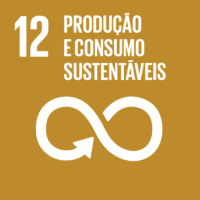Ciência_Iscte
Publicações
Descrição Detalhada da Publicação
2021 Global Fashion Marketing Conference
Ano (publicação definitiva)
2021
Língua
Inglês
País
Coreia do Sul
Mais Informação
Web of Science®
Scopus
Esta publicação não está indexada na Scopus
Google Scholar
Esta publicação não está indexada no Overton
Abstract/Resumo
Artificial intelligence (AI) can be regarded as an algorithm capable of reproducing human behaviors and solve tasks (Loureiro, Guerreiro, & Tussyadiah, 2021). For Kaplan and Haenlein (2019, p. 15) artificial intelligence is,
“a system’s ability to correctly interpret external data, to learn from such data, and to use those learnings to achieve specific goals and tasks through flexible adaptation”.
The intelligence of this algorithm is explained by the capability of learning and improvement by itself from experience, adding value to its initial knowledge. This way, it is possible to solve non-routine tasks. In other words, this algorithm is not only capable of reproducing repetitive behaviors (Ashfaq, 2020). AI technology gives machines the opportunity to act and think like humans. This technology can use natural language processing, accepting and answering voice commands, which is crucial for in-home voice assistants (Kumar, Kumar, & Ramachandran, 2020; Loureiro, Japutra Molinillo, & Bilro, 2021).
We can find in literature diverse studies that attempt to link AI with the concept of engagement (Loureiro, Guerreiro, & Tussyadiah, 2021; Romero et al., 2021), yet more studies are needed to explore engagement between human and AI in the workplace. Employee engagement (EE) aggregates five main dimensions: employee satisfaction, employee identification, employee commitment, employee loyalty and employee performance (Kumar & Pansari, 2016). Social interaction (SE) is expected to enhance employee engagement, but how it occurs? Following Chi, Denton and Gursoy, (2020), here we consider three components of SI: use self-efficacy (SIRUSE), anthropomorphism (SIAN) and effort expectancy (SIEEX). Robot use self-efficacy consists of the personal perception of the ability to use a robot (Turja, Rantanen & Oksanen, 2017). Employees with higher levels of robot use self-efficacy are more willing to interact with AI service robots (Latikka, Turja, & Oksanen,2019). Anthropomorphism is the level of similarity of the robot when compared with humans. Xu (2019) found that users, employees, and customers, are more willing to trust a robot with human-like voice instead of machinelike voice. Thus, anthropomorphism influences users’ ability to trust the robot (Chi et al., 2021). Effort expectancy is the effort, perceived by users, needed to interact with a robot in a service transaction (Gursoy, Chi, Lu & Nunkoo, 2019). When users perceive that a significant psychological effort is required to learn how to interact with AI robots, they tend to have lower levels of trust in AI robots. For these reasons, the effort expectancy is one of the aspects that influence users to trust AI robots (Gursoy et al., 2019). Based on the above, we consider that: H1: SIRUSE influences EE; H2: SIAN influences EE; H3: SIEEX influences EE.
Agradecimentos/Acknowledgements
--
Palavras-chave
Social interaction,Anthropomorphism,Self-efficacy,Effort expectancy,Employee engagement,AI robot
Classificação Fields of Science and Technology
- Economia e Gestão - Ciências Sociais
Registos de financiamentos
| Referência de financiamento | Entidade Financiadora |
|---|---|
| UIDB/00315/2020 | Fundação para a Ciência e a Tecnologia |
Contribuições para os Objetivos do Desenvolvimento Sustentável das Nações Unidas
Com o objetivo de aumentar a investigação direcionada para o cumprimento dos Objetivos do Desenvolvimento Sustentável para 2030 das Nações Unidas, é disponibilizada no Ciência_Iscte a possibilidade de associação, quando aplicável, dos artigos científicos aos Objetivos do Desenvolvimento Sustentável. Estes são os Objetivos do Desenvolvimento Sustentável identificados pelo(s) autor(es) para esta publicação. Para uma informação detalhada dos Objetivos do Desenvolvimento Sustentável, clique aqui.

 English
English



